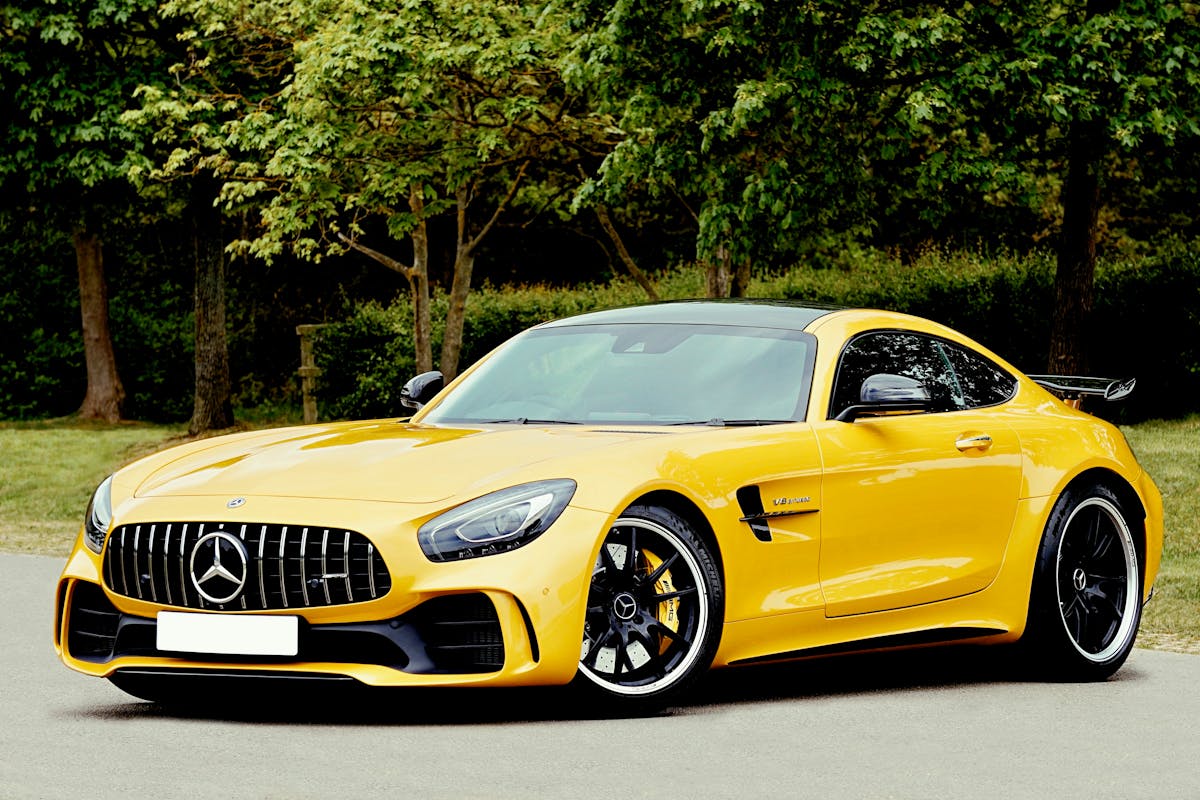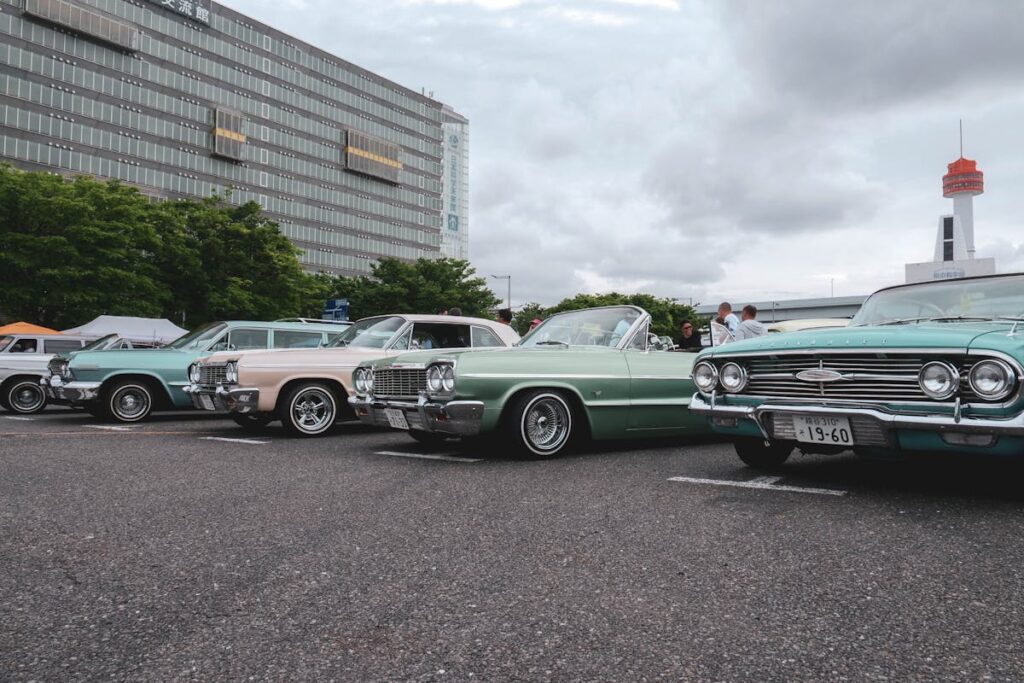The automotive industry boasts an array of car types and body styles, each presenting unique attributes and serving distinct purposes. In the vast spectrum, you’ll find everything from the family-friendly SUVs and utilitarian vans, to the adrenaline-charged sports cars and the epitome of luxury in high-end models. Not forgetting the increasingly popular sustainable options in the form of electric and hybrid cars. By unpacking the complexities of these diverse vehicle classifications, one can gain a clearer perspective to make informed decisions. How, then, do these differences cater to individual needs and lifestyles? Let’s commence on this journey of discovery.
Understanding Car Body Styles
There are countless types of cars available on the market today, each boasting a unique body style that serves specific purposes and appeals to different consumer tastes. Convertibles, for instance, offer the advantage of an open-air driving experience, providing an exhilarating sense of freedom and adventure.
Wagons, on the other hand, are known for their versatility, providing ample cargo space without compromising on passenger comfort, making them ideal for families and long-distance travel. In the domain of eco-friendly vehicles, electric cars and hybrids stand out. Electric cars produce zero tailpipe emissions, while hybrids offer efficient fuel consumption, combining a gasoline engine with an electric motor to optimize performance.
Luxury cars, with their high-end features like leather upholstery, advanced technology, and superior comfort, cater to consumers seeking a premium driving experience. Off-road vehicles, such as SUVs and 4x4s, possess robust capabilities, enabling them to tackle challenging terrains with ease.
Compact cars, popular in urban environments, are highly maneuverable and efficient, offering easy parking and fuel economy. Finally, crossovers blend the benefits of SUVs and sedans, offering a higher driving position, increased cargo space, and car-like handling.
The Classic Sedan Explained
The Classic Sedan, a staple in the automotive world, is characterized by its distinct design, performance aspects, and safety measures. With a design featuring two rows of seats and a separate compartment for luggage, it offers a blend of comfort and functionality. This discussion will explore these features in depth, along with the performance and safety aspects that contribute to the sedan’s enduring popularity.
Sedan Design and Features
Car enthusiasts’ favorite, the classic sedan, boasts a unique design and features that distinguish it from other car types. The sedan’s design aesthetic appeals to a broad audience due to its practicality and versatility. The sedan interior is spacious and comfortable, often designed to seat five passengers comfortably, making it an ideal choice for families and professionals alike.
Sedan technology has evolved over the years, making this car type more convenient, safer, and more enjoyable to drive. Some of the key features that make the sedan stand out include:
- A three-box configuration with separate compartments for the engine, passengers, and cargo.
- Advanced safety features such as anti-lock braking systems, electronic stability control, and numerous airbags.
- High-tech infotainment systems for a connected and entertaining ride.
- Fuel-efficient engines and hybrid options for environmentally conscious drivers.
- Luxurious interiors with high-quality materials and comfortable seating.
From the above, it is clear that the classic sedan is a versatile car type that caters to various needs. Its design and features make it a comfortable, safe, and enjoyable vehicle for any driver. Whether for family use, commuting, or simply the pleasure of driving, the sedan is a reliable choice.
Sedan Performance Aspects
Having explored the design and features that make the sedan an attractive option, it is only fitting to venture into the domain of performance. The performance of a sedan is an essential aspect that largely determines its appeal to prospective buyers.
The sedan performance typically encompasses various elements such as speed, acceleration, braking, and fuel efficiency. Regarding speed and acceleration, sedans are known for their smooth and responsive drive, given their lower center of gravity. This aspect enhances the sedan handling, providing a sense of control and stability during high-speed maneuvers.
Braking performance in sedans is often superior due to their lighter weight and compact size compared to larger vehicle types. This guarantees shorter stopping distances, contributing to the overall safety of the vehicle, which we will discuss in the next subtopic.
Fuel efficiency is another key performance attribute of sedans. With advancements in technology, modern sedans offer impressive fuel economy without compromising on power or comfort.
Sedan Safety Measures
Safety measures incorporated into the design of sedans greatly contribute to their attractiveness for consumers. These safety features, often reflected in sedan safety ratings, are the result of advanced sedan technologies constantly being developed and improved upon.
The safety measures in sedans revolve around:
- Active Safety Systems: These are designed to prevent accidents. They include technologies like Anti-lock Braking System (ABS), Electronic Stability Control (ESC), and Traction Control System (TCS).
- Passive Safety Systems: These protect occupants during an accident. They range from seatbelts and airbags to crumple zones and safety cell designs.
- Advanced Driver-Assistance Systems (ADAS): These include features like adaptive cruise control, lane departure warning, and automatic emergency braking.
- Safety Ratings: High sedan safety ratings, determined by organizations like the IIHS and NHTSA, often indicate the overall safety of a sedan.
- Structural Integrity: The car’s body structure is designed to absorb and distribute the force of impact in the event of a collision, thereby lessening the impact on passengers.
Sedan safety measures are an essential component of their design, greatly enhancing their appeal to consumers prioritizing safety.
Dive Into the Coupe Design
Shifting from sedans, we now move our focus to the distinctive style of the coupe. This section will explore the defining characteristics of coupe cars, their unique features, and some of the most popular models on the market. Understanding these aspects will provide an all-encompassing view of why coupes hold a prominent position in the automobile industry.
Defining the Coupe Style
In the vast universe of car designs, the coupe style holds a special place. This design, rooted in coupe history, is characterized by a two-door body style and a sloping rear roofline, offering a sporty yet elegant aesthetic. The name ‘coupe’ comes from the French word ‘couper’, meaning ‘to cut’, aptly describing the car’s cut-down design.
There are several coupe variations, each having its unique characteristics. Here are some of the most common ones:
- Two-door Coupe: The classic coupe design with two doors and a fixed roof.
- Four-door Coupe: A modern take on the coupe, offering more practicality with four doors while retaining a coupe-like silhouette.
- Convertible Coupe: A two-door coupe that features a retractable roof, combining the sportiness of a coupe with the freedom of a convertible.
- Fastback Coupe: Distinguished by its continuous slope from the roof to the rear of the car.
- Hardtop Coupe: This design eliminates the central pillar, providing a sleeker look when the windows are down.
In essence, the coupe style is about blending sporty appeal with luxury, giving birth to a car design that is both thrilling and refined.
Features of Coupe Cars
Diving into the design of coupe cars, one cannot help but appreciate the distinctive features that set them apart. Coupe cars, typically associated with sportiness and luxury, are known for their streamlined two-door design. However, their unique features extend far beyond aesthetics.
Coupe performance is one of the key deciding factors for many buyers. With a compact, lightweight design, coupes often offer superior handling and speedy acceleration, making them fun to drive and highly responsive. The lower centre of gravity and stiffer body construction add to their performance, providing a smooth and controlled ride.
Coupe technology is another aspect that elevates these vehicles. Advanced features such as adaptive cruise control, lane-keep assist, and high-tech infotainment systems are common in modern coupes, enhancing both driving enjoyment and safety. In addition, many coupes also boast high-performance braking systems and sport-tuned suspensions, offering a dynamic driving experience.
Popular Coupe Models
Having explored the distinctive characteristics and advanced technology that make coupe cars desirable, it’s fitting to spotlight some popular models exemplifying these traits. These models, whether luxury coupes or performance coupes, embody the style, agility and sophistication that typify the coupe design.
- Audi RS5: This luxury coupe is recognized for its harmonious blend of elegance, power, and advanced technology. It boasts a bi-turbo V6 engine and a refined interior with top-class materials.
- BMW M4: A quintessential performance coupe, the M4 offers an exhilarating driving experience with its twin-turbo inline-six engine and sharp handling.
- Mercedes-Benz E-Class Coupe: Revered for its sleek lines and plush interior, this luxury coupe provides a perfect balance of comfort and performance.
- Chevrolet Corvette: A symbol of American performance coupes, the Corvette offers potent V8 engines, exceptional handling, and a rich motorsport heritage.
- Porsche 911: Iconic and versatile, the 911 has multiple variants, each offering unique performance capabilities, making it a standout in the luxury coupe sector.
These models reflect the essence of coupe cars, combining aesthetics, performance, and luxury in compact yet powerful packages.

Hatchbacks: Compact and Convenient
Hatchbacks represent a unique blend of compact design and convenience, making them a popular choice in today’s automotive market. Characterized by a rear door that opens upwards, hatchbacks offer impressive cargo space while maintaining a smaller footprint. This offers numerous hatchback advantages, making them a versatile vehicle choice for city dwellers where parking space is at a premium.
The hatchback versatility is further amplified by the foldable rear seats, allowing for increased cargo space when needed. This kind of flexibility, coupled with fuel efficiency, makes hatchbacks the vehicle of choice for many urban commuters and small families. A hatchback’s smaller size also offers better maneuverability in heavy traffic, and its typically lower weight contributes to improved fuel economy.
Despite their compact size, hatchbacks do not compromise on safety. Many models come equipped with advanced safety features like automatic emergency braking, lane keeping assist, and rearview cameras. In the domain of comfort, hatchbacks are no less than their larger counterparts, often featuring advanced infotainment systems, comfortable seating, and high-quality interior materials. Fundamentally, the hatchback offers a compelling blend of practicality, economy, and convenience, making it a standout choice in the diverse automotive market.
Unpacking the SUV Phenomenon
Driving the rise of the SUV phenomenon, Sports Utility Vehicles, or SUVs, have made a considerable impact on the global automotive industry. This impact is largely fueled by their unique blend of off-roading capabilities, urban versatility, and luxury features. These vehicles have indeed transformed the face of the auto industry, with their demand skyrocketing globally.
SUVs have evolved over the years, with current models showcasing: – Advanced safety innovations, featuring technology integration that improves driving comfort and reduces risk. – Enhanced fuel efficiency, which counters the earlier criticism of SUVs being fuel guzzlers. – Unparalleled urban versatility, making them ideal for both city commuting and off-road adventures. – A host of luxury features, providing comfort and convenience. – Market demand driven by their global popularity and environmental impact considerations.
SUV trends have considerably influenced the auto industry’s direction, shaping it by consumer preferences for vehicles that offer both practicality and luxury. Their off-roading capabilities and versatility have expanded the consumer base, appealing to drivers seeking adventure and convenience. Despite environmental concerns, the industry has responded with fuel-efficient models and technology integration, making SUVs a dominant force in the automotive world.
The Rugged Beauty of Pickup Trucks
Stepping into the spotlight of the automotive stage, pickup trucks embody a rugged beauty that captivates both hardcore off-roaders and urban dwellers alike. These vehicles, with their robust design, are built to handle challenging terrains and heavy loads, making them the epitome of off-road capabilities and towing capacity.
Pickup trucks are typically characterized by their sturdy, rugged design, which includes reinforced chassis, large wheels, and powerful engines. Despite their tough exterior, most pickup trucks guarantee interior comfort, combining utility with luxury. Modern models offer spacious cabins, plush seating, advanced infotainment systems, and high-quality materials, offering passengers a pleasurable ride.
Another attractive feature of pickup trucks is their fuel efficiency. Advances in automotive technology have made it possible for these large vehicles to consume fuel more efficiently without compromising power or performance. In addition, customization options are plentiful, allowing owners to tailor their trucks according to their needs and taste.
Brand comparisons reveal that companies like Ford, Ram, and Chevrolet lead in the pickup market with models renowned for their reliability, adventure readiness, and impressive features. These brands continuously innovate to meet the evolving demands of consumers, assuring that pickup trucks remain a popular choice in the automotive world.
Sports Cars: Speed and Style
Bursting onto the scene with breathtaking speed and sleek design, sports cars represent the epitome of luxury and performance in the automotive industry. These vehicles, often the dream of many, are the embodiment of advanced engine technology and a rich racing history.
Sports cars are distinguished by several defining characteristics:
- High-performance engines: Sports cars often come equipped with high-performance engines, boasting cutting-edge technology to deliver exceptional speed and power.
- Aerodynamic body: The sleek and low-slung body of a sports car isn’t just for style—it’s designed to reduce drag, enhancing speed and performance.
- Lightweight construction: The use of materials like carbon fiber helps keep sports cars light, thereby boosting acceleration and agility.
- Sophisticated handling: These vehicles often feature advanced suspension systems, ensuring a smooth drive even at high speeds.
- Racing History: Sports cars have a rich history in racing, with legendary models dominating the world’s most prestigious racing events.
Vans and Minivans: Family-Friendly Options
In the domain of family transportation, vans and minivans reign supreme. These vehicles are specifically designed to cater to the needs of families, offering a multitude of family van advantages. With spacious interiors, vans and minivans provide ample room for passengers and cargo, making them ideal for family trips, daily commuting, or running errands.
One of the primary family van advantages is the vehicle’s capacity. Vans and minivans can seat up to seven or eight passengers comfortably, making them perfect for larger families or those who often travel with groups. This eliminates the need for multiple vehicles on outings, thereby reducing costs and environmental impact.
In addition to their capacity, minivan safety features are another significant advantage. These vehicles are equipped with advanced safety technologies such as anti-lock braking systems, stability control, and multiple airbags to protect all passengers. Many models also come with back-up cameras, blind-spot monitoring, and lane departure warnings to assist drivers and prevent accidents.
Whether it’s for everyday use or long road trips, vans and minivans offer a combination of space, comfort, and safety that few other vehicle types can match, making them a leading choice for family transportation.
Frequently Asked Questions
What Are the Fuel Efficiency Differences Between Car Types?
Fuel efficiency varies considerably between car types. Electric cars and hybrid vehicles typically offer the highest fuel efficiency, often surpassing conventional petrol or diesel cars due to their alternative energy sources and advanced technology.
How Does Car Body Style Influence Vehicle Safety?
Car body style greatly influences vehicle safety. Crash test results vary based on structural design. For instance, SUVs may offer better rollover protection, while compact cars might excel in collision avoidance due to their size.
What Is the Average Price Range for Each Car Body Style?
The average price range varies considerably by body style: compact cars typically range from $15,000-$25,000; luxury sedans, $35,000-$90,000; crossover SUVs, $20,000-$50,000; and sports coupes, $25,000-$100,000. These are approximate values and may fluctuate based on brands.
What Maintenance Requirements Vary Between Different Car Types?
Maintenance requirements differ per car type; electric vehicles necessitate battery checks, SUVs require regular service intervals, sedans need tire care, and coupes demand engine checks to guarantee peak performance and longevity.
How Does the Resale Value Differ Between Car Body Styles?
Resale values vary considerably among car body styles. Sedan popularity often guarantees stable resale value, while SUV demand can drive higher returns. Hatchback versatility enhances resale prospects, whereas convertible appeal can fluctuate based on market trends.

